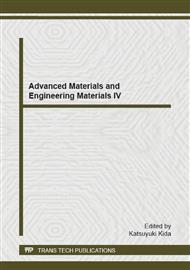p.424
p.429
p.433
p.437
p.441
p.451
p.455
p.459
p.463
Failure Analysis and Precaution of NPN Transistors G3G33A
Abstract:
Failure analysis (FA) is a critical element in the development of engineering processes and products. FA of components is the process of identifying failure mode/mechanism and finding out the causes of failure that relies on using of different testing techniques and analysis methods. It provides information necessary for technology advancement and for corrective action to improve quality and reliability. IC’s for military and space applications have extremely stringent reliability requirements. In this paper, the role of FA was discussed. And common and new techniques and tools were reviewed. Then the failure analysis of NPN transistors G3GGA was completed. Conclusions and recommendations for the analysis of failure sample and additional sample within the same batch are drawn from the discussions. This paper might serve as a reference to laboratories when encountering such problems.
Info:
Periodical:
Pages:
441-448
Citation:
Online since:
December 2014
Authors:
Keywords:
Price:
Сopyright:
© 2015 Trans Tech Publications Ltd. All Rights Reserved
Share:
Citation:


